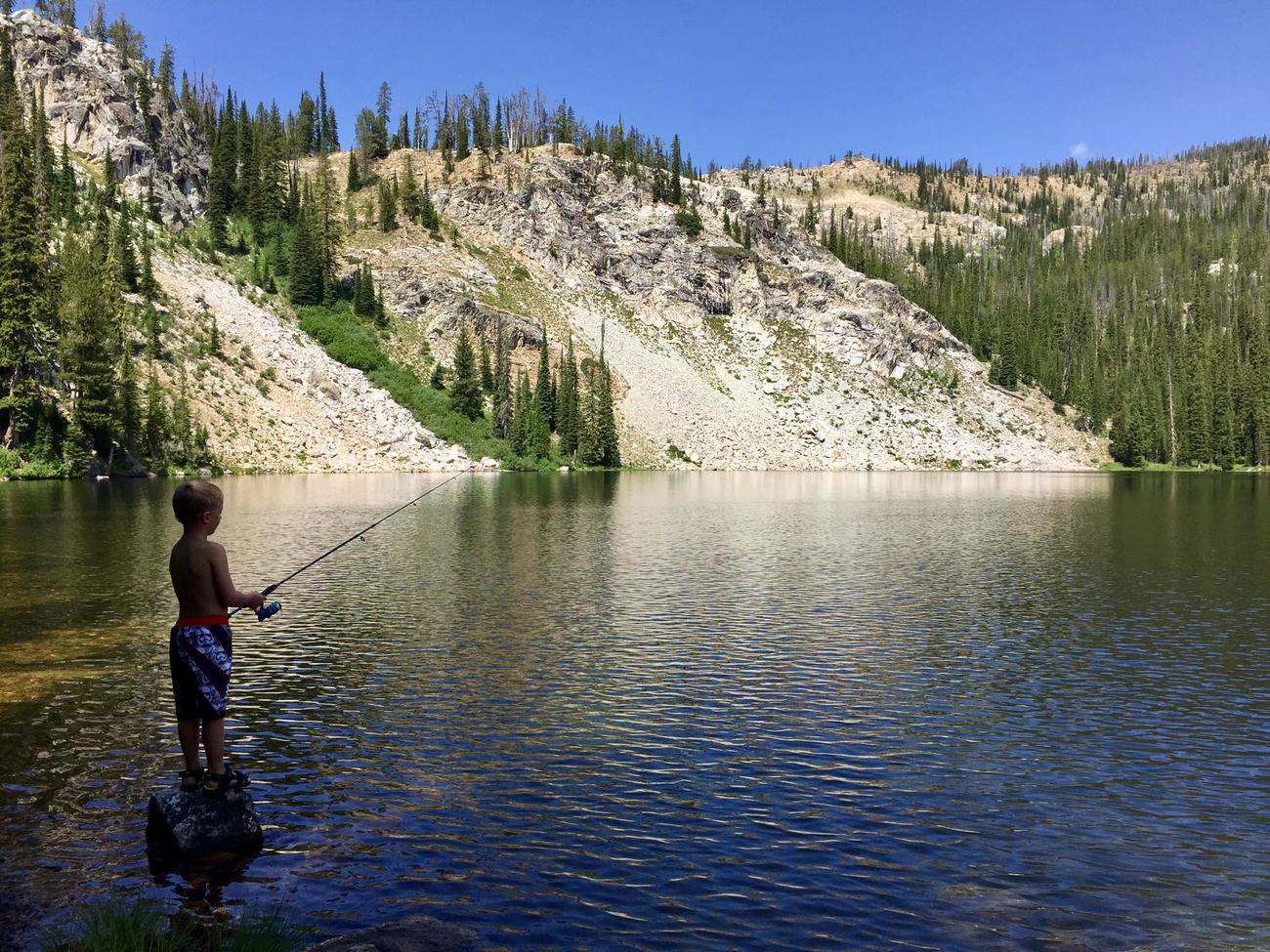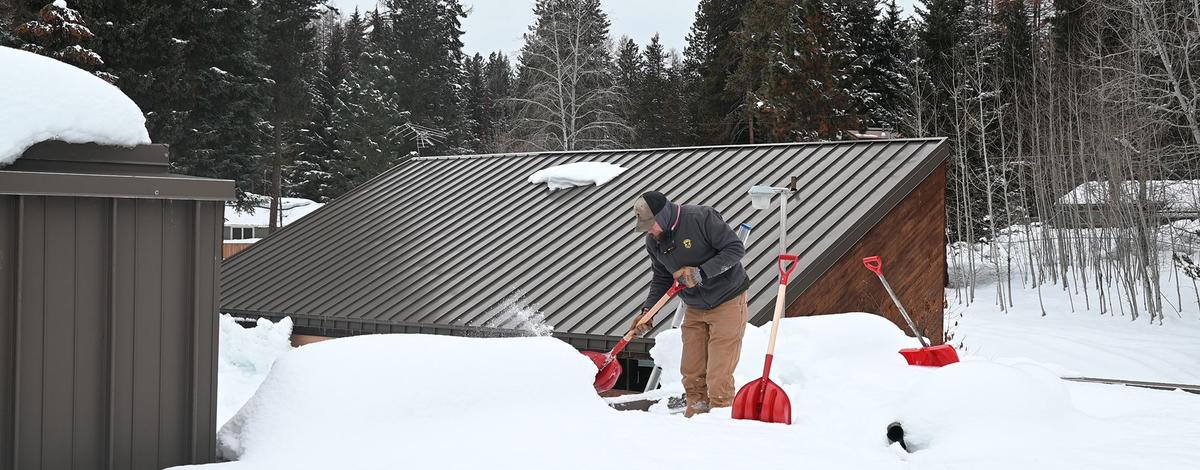
MCCALL, ID – (IDAHO DEPARTMENT OF FISH AND GAME STORY)
During the ‘dead’ of winter, the hatchery is alive with 2 million young salmon
McCall, a modest-sized mountain town that originated as a mining and forestry hub, has since evolved into a popular, year-round outdoor destination for snowmobilers, skiers, boaters, snow-sculptors and, of course, sportsmen.
While the recreation changes seasonally along with the workers who support them, the staff at Idaho Fish and Game’s McCall hatchery are busy growing two years’ worth of Chinook at a time when no one is salmon fishing in Idaho.
When it comes to producing the very fish that give the South Fork Salmon River its namesake — a Chinook fishery coveted by anglers across the state — those summer Chinook runs would not be possible without some hand-numbing, teeth-chattering operations in one of Idaho’s snowiest places (watch the video below to feel instantly 20 degrees colder).
The real winter carnival
Nestled in the trees less than a mile from downtown sits the McCall Fish Hatchery. Constructed in 1979 by the U.S. Fish and Wildlife Service and handed over to Idaho Fish and Game for native salmon mitigation, the McCall hatchery’s main purpose has remained constant since its genesis: Grow summer Chinook salmon for anglers.
Hatchery Manager Jamie Mitchell says the facility’s goal is to rear (or raise) and eventually release one million 5 ½-inch summer Chinook salmon smolts into the South Fork Salmon River every April. Mitchell has been on site as the hatchery’s main overseer since 2015, with prior stints at other Fish and Game operated hatcheries, including Hayspur, Cabinet Gorge, Rapid River, Clearwater and Nampa.
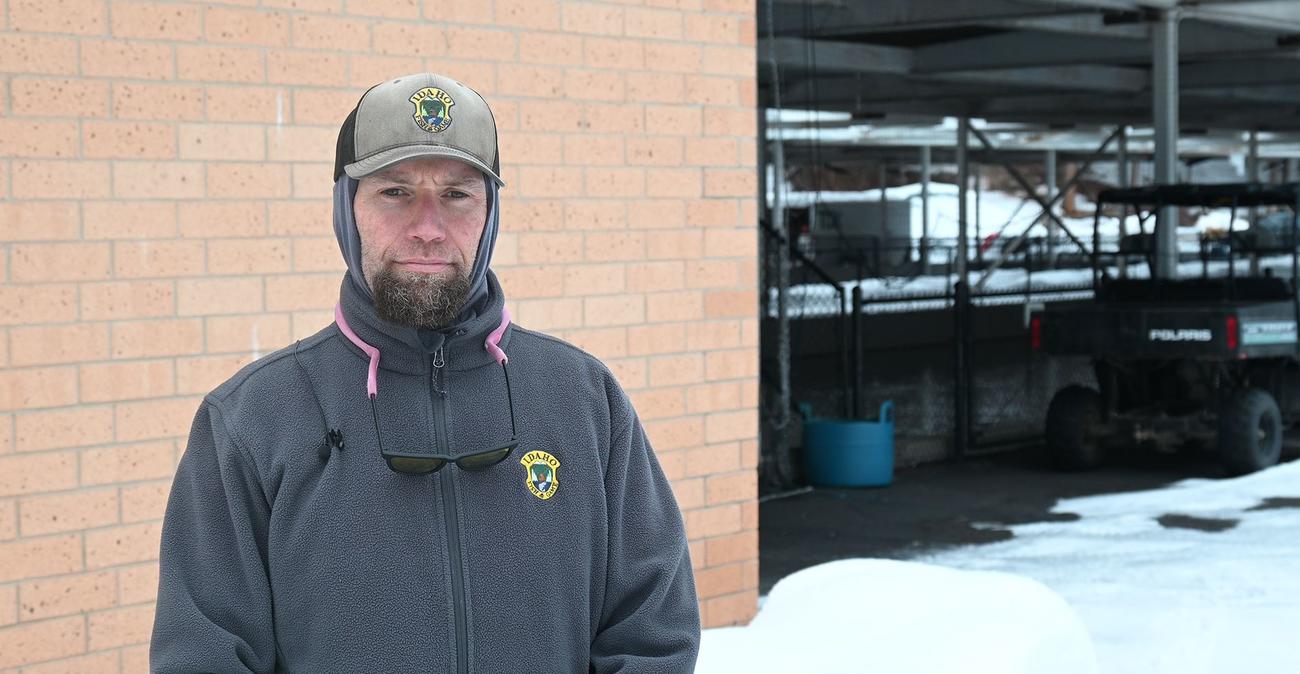
“Our hopes are that the smolts, once released, will migrate out to the Pacific Ocean,” Mitchell said. “Once out to sea, the salmon smolts will spend 2 to 3 years in the Pacific and eventually begin their late-spring, early-summer journey back to the same watershed in which they were born.”
That’s the macro view. To fully understand how the McCall hatchery’s Chinook salmon program ticks and, more importantly, how its staff battles the winter weather in one of the coldest parts of the state, we need to boil it down at a micro level.
In the beginning
McCall’s hatchery is one of the more unique facilities in the state. For starters, it centers predominantly around anadromous Chinook salmon, a highly sought-after and protected species of salmon with chromatic skin and black gums that migrate to the ocean during their formative months and return to freshwater to spawn and die. Idaho’s Chinook salmon are often loosely sorted into three groups — spring, summer and fall — based on when they return to their spawning grounds.
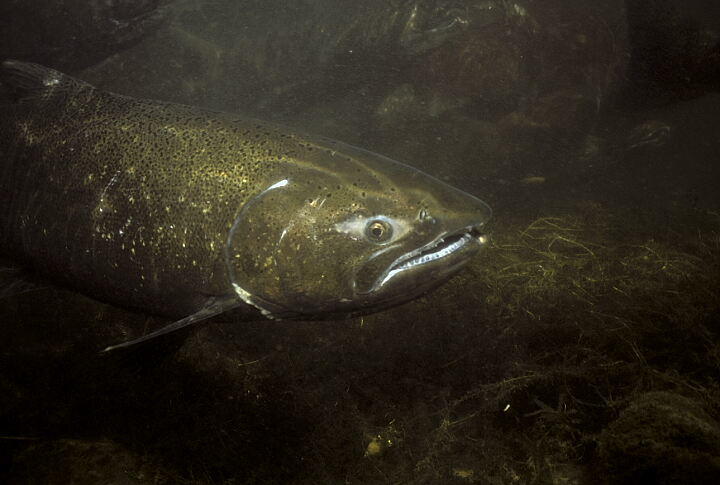
Summer Chinook salmon are the McCall Fish Hatchery’s number one export. Despite their classification as a summer-run salmon, the process is year-round in an ever-revolving class of salmon graduates. From the time they enter as eggs to when they are released back into the South Fork, the salmon will have spent nearly 18 months (including two winters) at the McCall hatchery.
Many of Idaho’s anadromous hatcheries operate along the same waters that shuttle their fish to and from the ocean. River systems like the Snake, Clearwater and Salmon. McCall Fish Hatchery does things a little different, largely due to its geographic location.
Since the South Fork Salmon River does not connect to the Payette watershed, the salmon’s 750-mile journey takes them up the South Fork, a tributary of the main Salmon River that connects to the Pacific Ocean via the Snake and Columbia rivers.
It’s here, along the South Fork Salmon River, that the hatchery’s summer Chinook salmon begin (and end) their lives.
On the road (again)
Every year, thousands of summer-run Chinook nose their way up the furthest reaches of the Salmon River’s south fork to empty their egg-filled torsos. Fish and Game fisheries staff gather on site, beginning in June, to trap these returning adults through early September.
By roughly the second week of August through early September, many of those adult Chinook salmon are ready to spawn. Fish and Game spawns a large portion of these adult Chinook and collects the fertilized eggs for the McCall hatchery, while also allowing some adults to continue their journey upriver to spawn naturally.
This process has become even more critical in recent years.
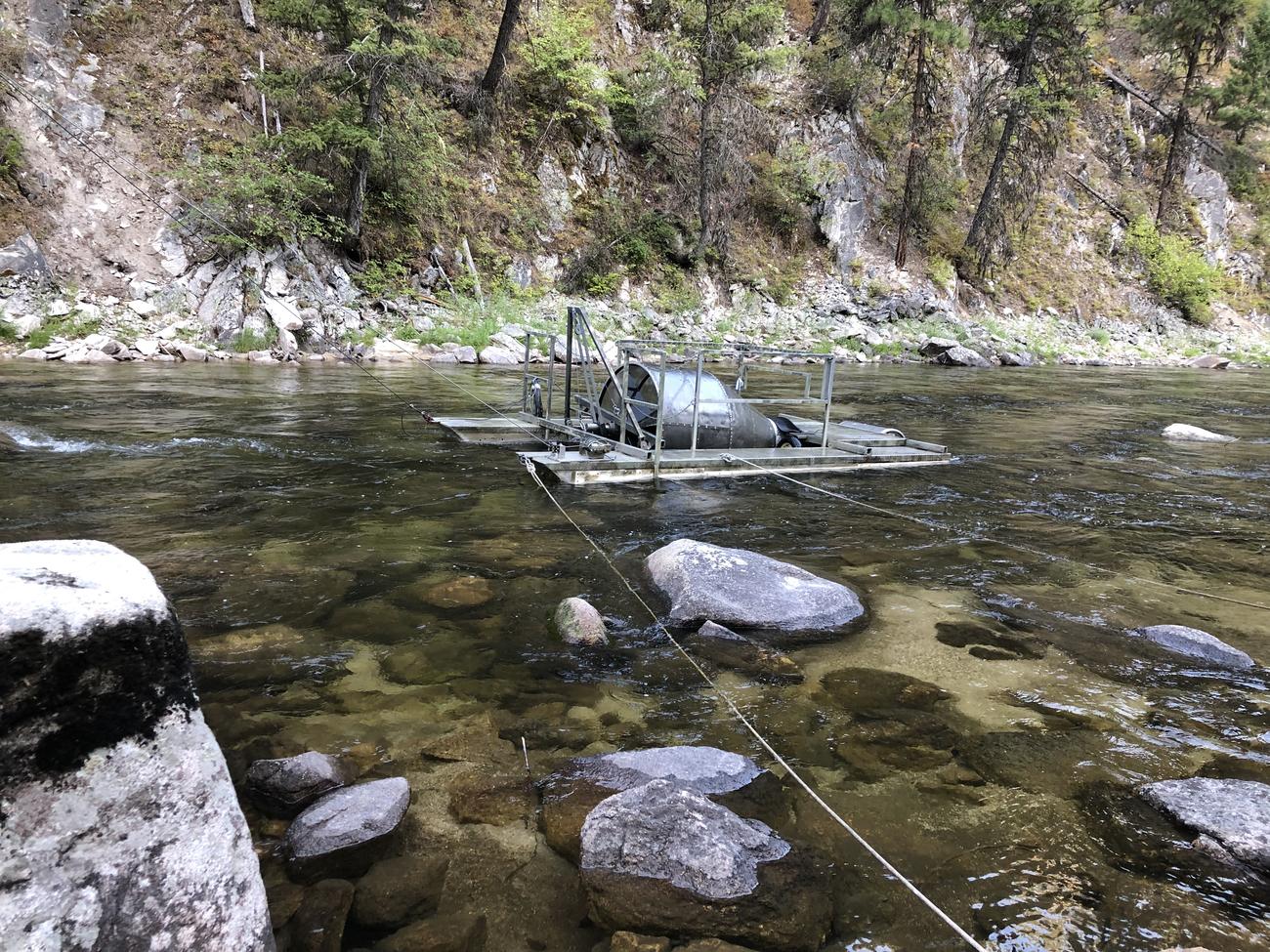
With rising water temperatures starting to impact the fishery and alter the Chinook salmon’s spawning cycle, Fish and Game staff have had to collect a portion of the eggs (at the peak of summer) to raise as broodstock in a controlled environment. Those eggs are carted in water-filled rafting coolers and storked back over Big Creek Summit to the McCall Fish Hatchery where they get placed in incubators.
Considering they’re named “summer” Chinook, it might seem like that’s the busiest time. And it can be busy during spawning season. But eggs taken in late summer don’t hatch until November, and each spring, hatchery crews release roughly one million smolts into to the South Fork so they can swim to the ocean. So during fall and winter there are more Chinook at the hatchery than during spring and summer.
A unique coldwater hatchery
The McCall hatchery site in 1979 wasn’t selected to grow Chinook by chance. Located less than a mile downstream of Payette Lake — a relatively high-elevation, bowl-shaped lake known for its cool, clean water — the hatchery uses lake water and gravity to its advantage by letting it flow downstream through pipes into the hatchery.

In winter, when Fish and Game staff are busy sorting Chinook salmon eggs and maintaining the facility, the top several inches of the lake have usually iced over, but there’s still a constant (and finger-numbingly cold) source of water that fuels the hatchery.
“Payette Lake freezes over for up to 5 months,” Mitchell said. “This brings the water temperature down to about 37 or 38 degrees, which stays relatively constant during that time from the moment it first enters the hatchery’s system to the time it flows back out into the Payette River.”
The cold water snakes its way through the hatchery’s various pipes and tanks, filling everything from stacked incubators, settling ponds, and long, outdoor concrete ponds, called raceways.
As the temperature drops and the snow goes from knee-deep to waist-deep to head-high, the McCall hatchery’s staff has its own set of challenges.

“The cold water slows down the growth cycle. The fish still need to eat, things just slow down a bit,” Mitchell went on. “Except for the snow shoveling.”
The world’s shortest (and snowiest) commute
“Here in McCall, we get lots of snow,” Mitchell said, demonstrated by a wad of snow cradled in a frozen basketball hoop net. “We’re constantly shoveling and pushing snow around with the plow truck to keep access into the hatchery.”

Idaho’s fish hatcheries, for those who’ve never visited one, are often self-sustained little villages, so to speak, that house both fish and staff on the same grounds. While the 50-foot commute might seem convenient, it doesn’t mean the path to work is always smooth sailing.
“We maintain three residences for the full-time staff,” said Mitchell, pointing to his own home on the other side of the parking lot. “It’s not just access into the hatchery buildings, but access to our own homes as well.”
Clearing the paths, shoveling snow off the roofs and maintaining equipment is just another bullet point on the to-do list. In past winters, when it snows nearly every day, Mitchell mentioned that just finding room to put the snow becomes a challenge in itself.
Imagine, after trimming the hedges in your own backyard, you had to walk down to the end of the yard — after you snowblowed the path, of course — to tend to about 2 million Chinook salmon eggs and smolts entrusted to you by the public. Oh, and it’s 16 degrees out.
“It’s just got to become second nature. It’s just what you do,” Mitchell said. “You got to be ready to shovel your way into work, shoveling your way out of your house. It’s just what you do in McCall, I guess.”

Managing the South Fork’s Chinook salmon program is literally a round-the-clock job that doesn’t slow down, even when the mercury drops. But while Chinook salmon might hog the spotlight as the McCall hatchery’s leading role, there are a few other species that round out the hatchery’s full cast of characters.
Supporting roles
In addition to the Chinook salmon program, McCall Fish Hatchery also manages a modest resident rainbow trout program for local anglers.
“We get about 45 to 60,000 catchables from the Nampa Fish Hatchery that we’re able to hang on to in the summer, and we’re able to stock those in our local family fishing waters,” Mitchell said.
McCall and the surrounding area are also highly regarded for their alpine lake networks, which offer incredible opportunities for summer anglers to experience Idaho’s backcountry and see a lot of tight lines. Mitchell said that the McCall hatchery helps with that effort as well.
“Each year, we’ll stock between 100 to 130 high-mountain lakes with Westslope cutthroat trout, rainbow trout, golden trout and Arctic grayling,” he said.
If some of those species sound foreign or exotic, it’s because the greater McCall area and the Salmon River mountains offer some truly unique alpine fisheries, and the McCall hatchery is well placed to support those alpine fisheries.
There’s nothing quite like hooking a 30-inch Chinook salmon along the Salmon River’s south fork, or watching a cutthroat trout slurp up a dry fly off the surface of a pristine alpine lake.
But long before the golden rays of the sun rise and set on those fisheries in the tepid days of summer, the contrivance of the McCall Fish Hatchery, its staff and its aquatic residents keep on running, swimming, feeding, flowing — and, of course, snowplowing.
